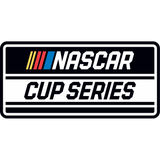
NASCAR suspends Hamlin crew chief Grubb 6 races
CHARLOTTE, N.C. (AP) NASCAR suspended Denny Hamlin's crew chief and car chief on Tuesday for six races because the Joe Gibbs Racing entry failed inspection following his third-place finish at Indianapolis Motor Speedway.
Darian Grubb and Wesley Sherrill were both suspended through the Sept. 6 race at Richmond. Grubb, the crew chief, was also fined $125,000.
It strips Hamlin of two vital crew members during the stretch of the season he would be putting the finishing touches on preparations for NASCAR's title-deciding, 10-race Chase for the Sprint Cup championship. Grubb and Sherrill, who also each received six months' probation, are not eligible to return until the Chase opener, Sept. 14 at Chicago.
JGR said in a statement it will appeal the penalty, but Grubb and Sherrill will begin serving their suspensions immediately. Under NASCAR rules, suspended competitors can compete until the appeal process is complete, but delaying sitting out would extend the suspensions into the Chase should JGR not get portions of the penalty overturned.
Also, Hamlin and team owner Joe Gibbs were docked 75 points apiece in the driver and owner standings. It dropped Hamlin from 11th to 21st in the Sprint Cup standings. But, as a race winner already this season, Hamlin is likely guaranteed a spot in the 16-driver Chase field.
Hamlin's car failed post-race inspection Sunday because NASCAR said it found issues with several of the covers in the rear firewall of the driver compartment. Loose or missing covers could vent the driver compartment and create more downforce for the car.
The penalty was considered a P5 infraction under the scale NASCAR implemented this season. It clearly defines penalties and their punishments on a P1 to P6 scale.
Penalties found post-race are subjected to an additional 25 point deduction and an increase of the fine by up to $50,000 than if they would have been found before the race. NASCAR has deemed a P5 penalty so serious, it does not consider intent.
''P5 penalties, in general, are extremely serious,'' the rule book states. ''They represent other key safety areas not mentioned elsewhere in this (penalty) section and potentially performance-related areas of the car that might or might not afford a competition advantage, but with a violation occurring in such a fashion that it would be naive to attribute the violation to an accident, omission, or misunderstanding, even if it was an accident, omission, or misunderstanding.''






